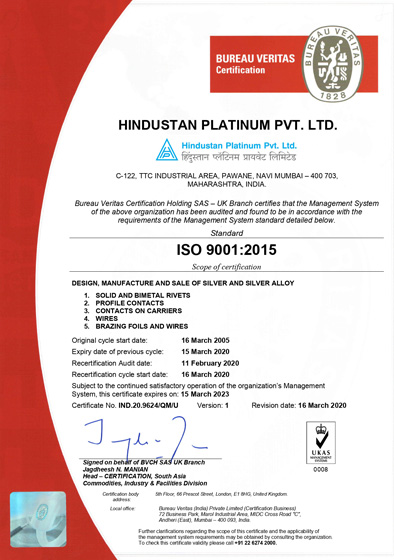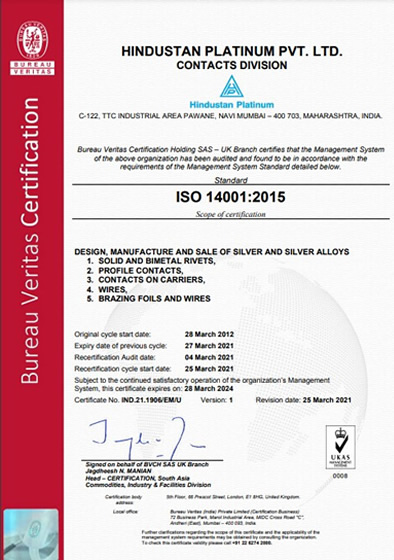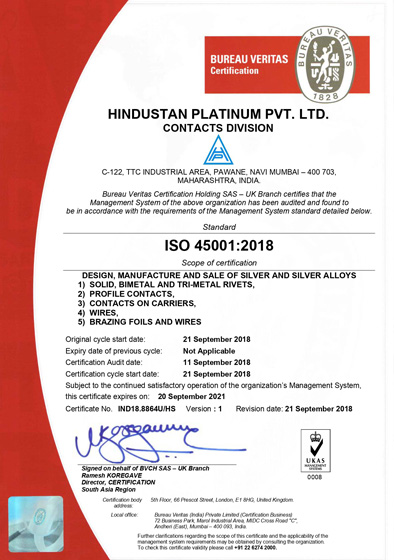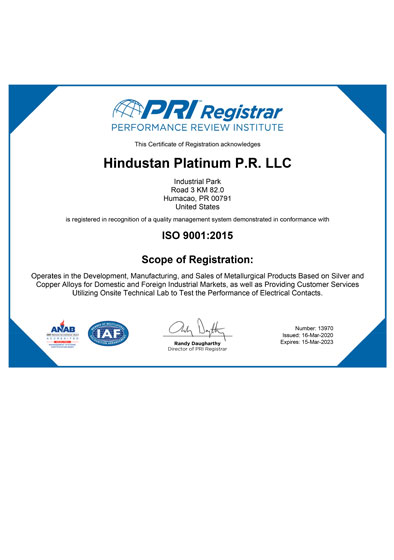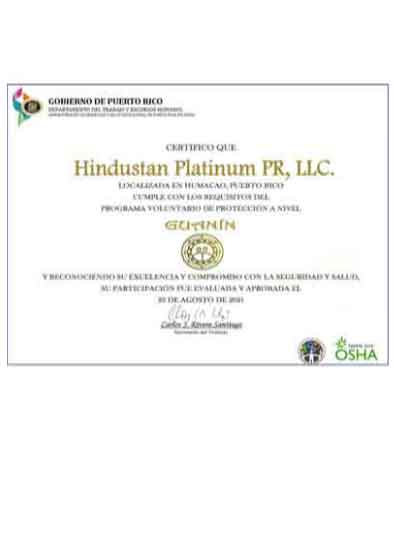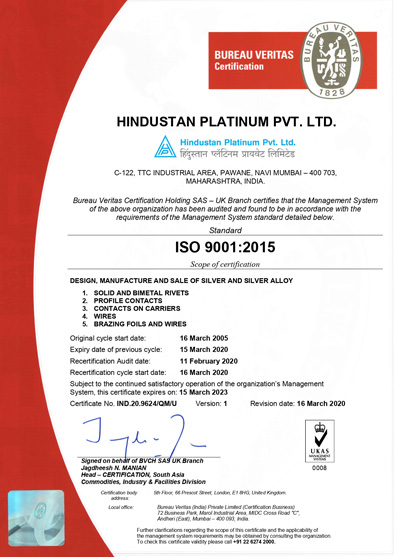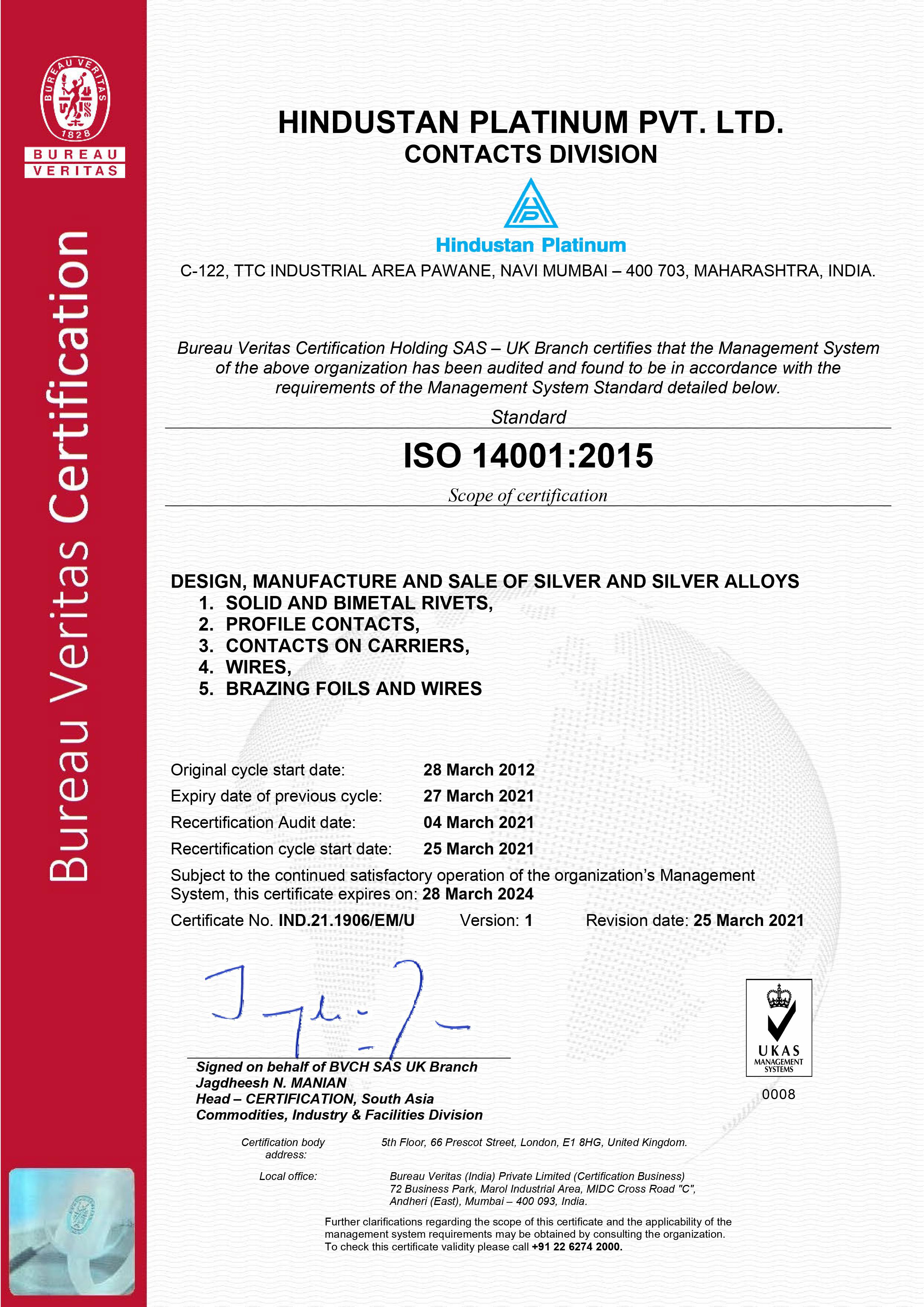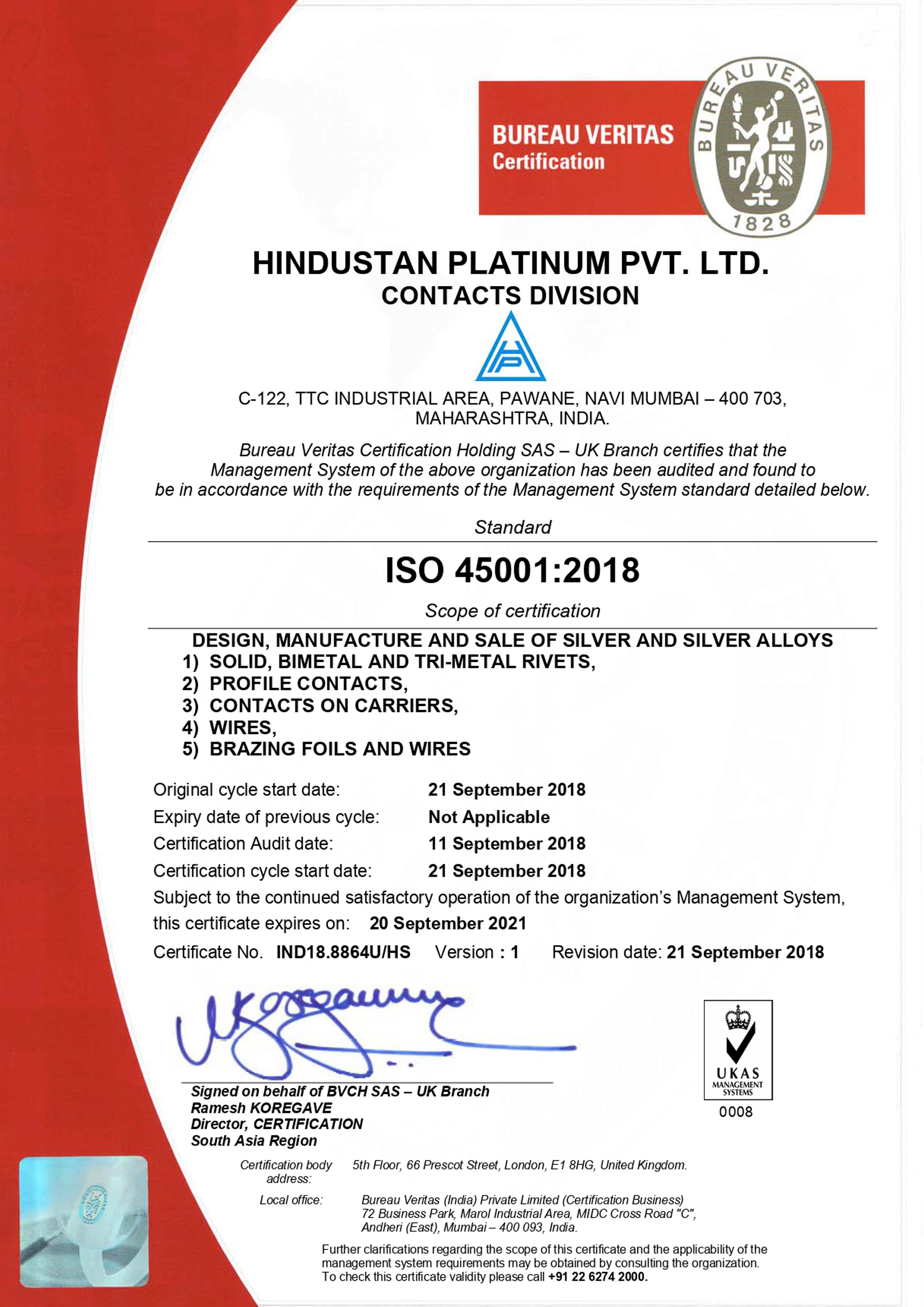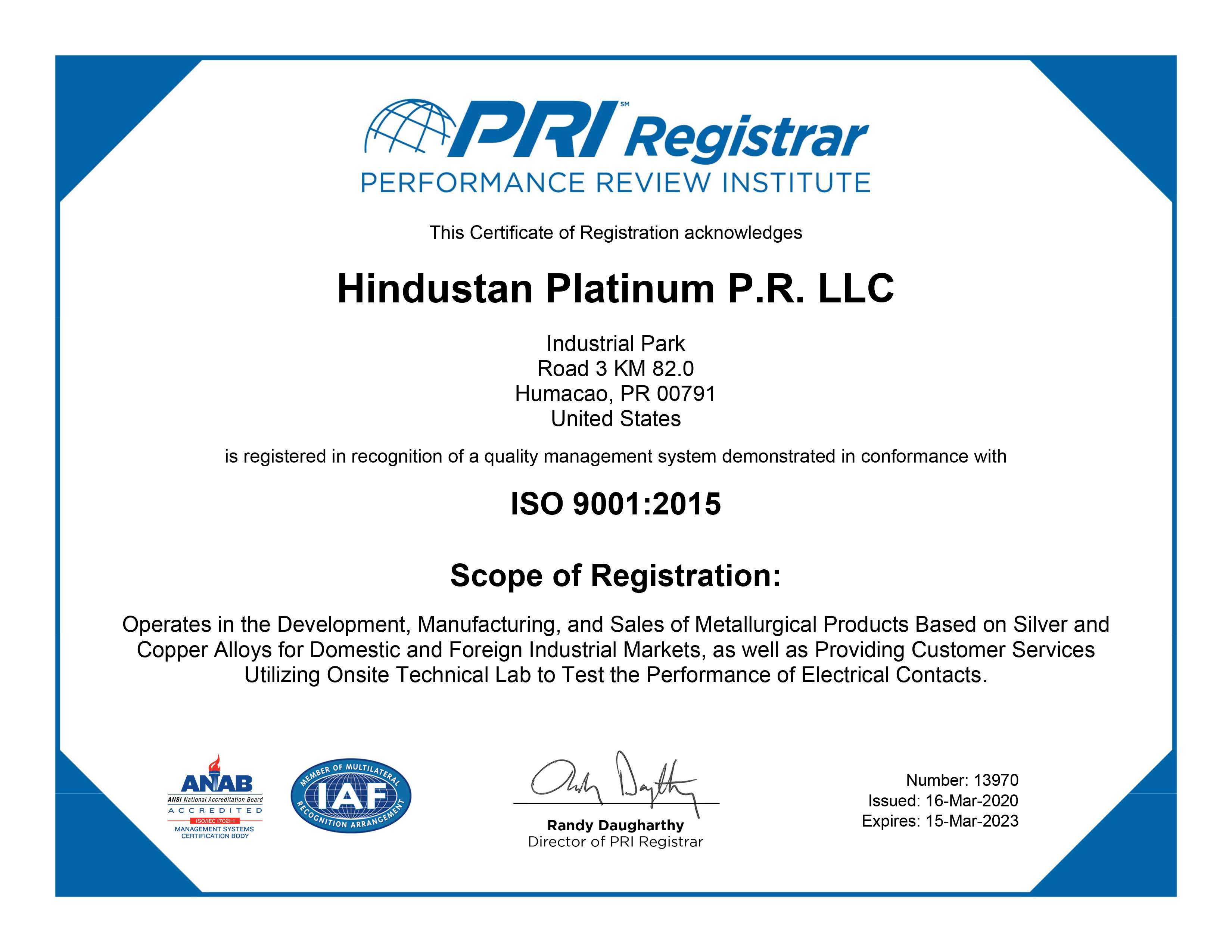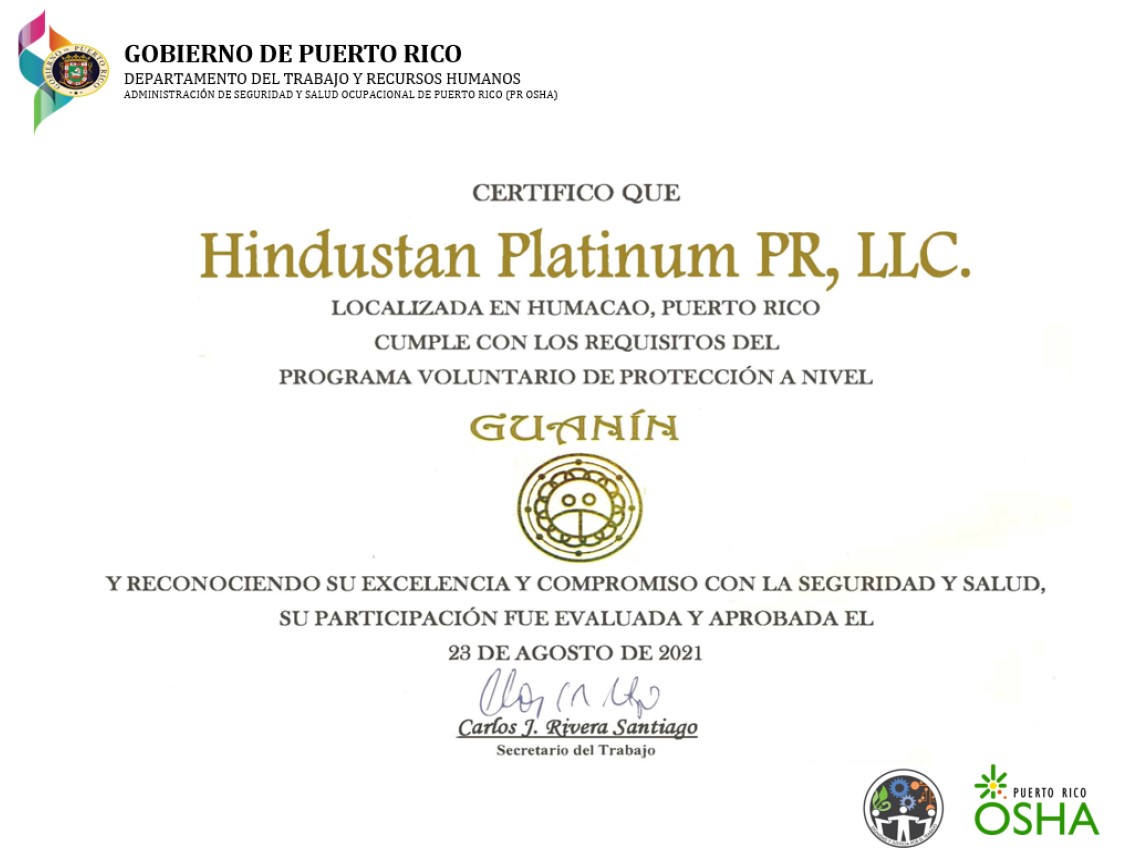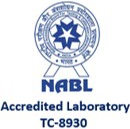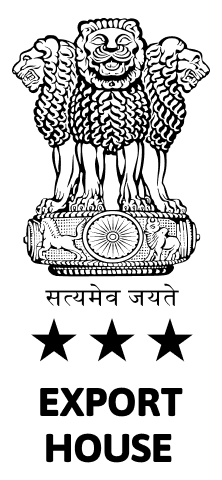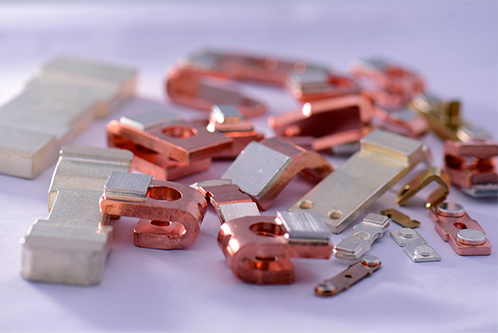Electrical contacts
Powering ahead and forging relations through our contacts
Electrical Contacts are the most important components of any switching device. The life of a contact determines the life of the switching device. This depends on application, choice of material and manufacturing process, among many other factors.
There has been a growing demand over the last several years for high performance contacts manufactured while keeping costs and processes under control.
At Hindustan Platinum, we strive to manufacture contacts that will exceed our customer’s performance expectations. Since 1961, our team of experts has acquired extensive experience in producing low and medium voltage switchgear contacts and has been helping customers choose the right material for their requirements.
Our comprehensive infrastructure includes an in - house precious metals refinery, state-of-the-art production facility and an experienced team of metallurgists & engineers. We assure our customers of value-added services and offer a complete end to end solution ranging from customised products to technical advisory services.
Our ERP system ensures enhanced control on business processes, such as production planning, manufacturing and thorough tracking and traceability from stores to warehouse through barcodes, leading to improved business performance.
Further, in a strategic move to strengthen our international footprint and to cater to the needs of the North and South American markets, we have acquired ABB’s electrical contacts manufacturing plant in Humacao, Puerto Rico.
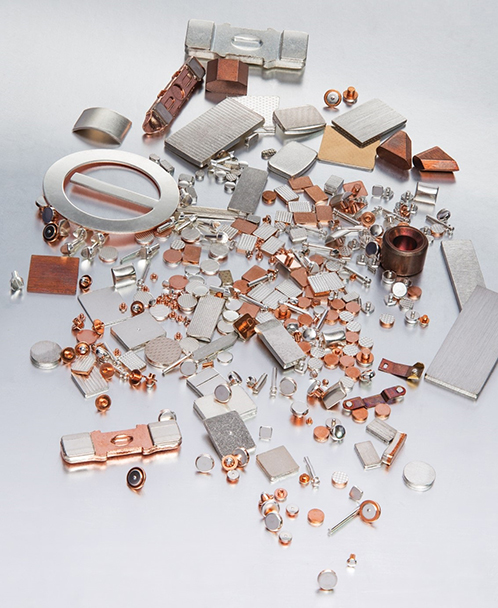
Industries We serve
Hindustan Platinum produces electrical contacts mainly for the low voltage and medium voltage industries, ranging from simple shapes to complex geometries. Driven by stringent quality checks, our products are VDA 6.3 compliant (German Automotive Standard). We understand that our customer’s safety depends on our reliability, which is why we strive for continuous improvement and constant innovation.
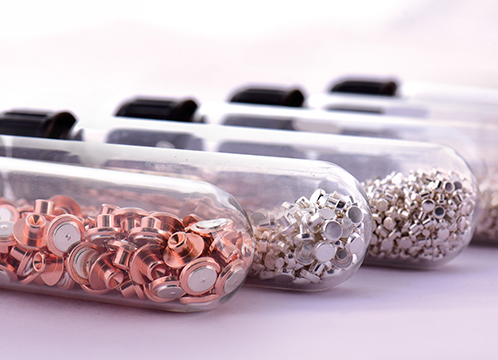
Offering superior electrical performance, solid rivets are manufactured in a wide range of sizes and alloys. High-speed cold heading provides greater strength to our contact rivets with consistent high quality. Standard rivets are usually supplied with a solid shank and are also available with indent or chamfered shanks. The accompanying heads can be flat, radial, conical or customized.
In a bimetal contact rivet, a layer of silver or silver alloy is metallurgically bonded to a copper shank. This high strength bonding imparts better thermal and current transfer compared to the brazed or welded types. Bimetal rivets can be provided with flat, radial, conical or customized heads. The shank could be solid, indent or chamfered in various sizes and specifications.
In India, we were the first to introduce the Bimetal rivets in 1973. It was a revolutionary product as it reduced the Silver content upto 60%. Customer gets the same performance at a substantially lower cost.
We manufacture high quality solid profiles of various shapes and sizes, such as discs and blanks. The contact side can be flat, radial or conical. Solid contact profiles are available with or without a brazeable layer. The brazeable layer can be pure silver, silver cadmium or any other silver brazing alloy.
Bimetal profiles are manufactured to fit all our customers’ requirements and specifications. They have low electrical resistance and low material erosion at high temperatures. They also have the ability to withstand severe arcing. They are made by bonding fine silver or silver alloy directly to a base metal (usually copper, nickel or their alloys). They provide a smooth, dense, hard and wear-resistant precious metal face with improved dimensional accuracy. The corrosion resistance can be improved with silver or nickel plating.
Tri-metal profiles have contact layers on both sides of the contact. This aids in making double-headed moving contacts. Tri-metal profiles are thermally bonded through a process that provides an improved interfaced bond, better staking, longer contact life and an opportunity to significantly reduce size.
Projection welding buttons provide added design flexibility, have no protruding shank and can have back-to-back welded buttons instead of double-headed solid rivets. They can be reliably welded to terminals without brazing agents. We have developed a special weldable copper, especially for these buttons, to which a fine silver or silver alloy face is bonded.
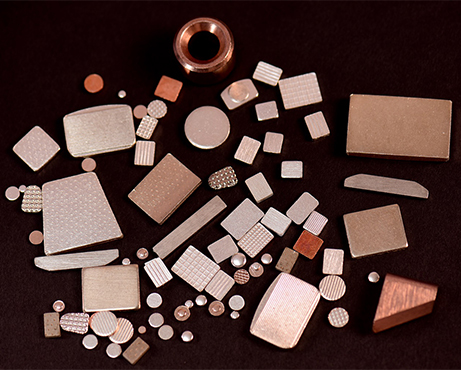
Starting with the purest raw materials, we provide materials of the highest standards. Testament for this is that we supply our semi-finished products to other contact manufacturers around the world.
Hindustan Platinum manufactures silver and silver alloyed wires used in high tech machines for manufacturing assemblies. We export these wires to many companies worldwide.
We manufacture high purity silver anodes with fine grain structure resulting in uniform erosion for better life. Anodes are used in the electroplating industry.
We manufacture silver and silver alloyed strips. These strips can be supplied with or without a brazeable layer. These strips are used in high speed automation assembly lines.
Available in various sizes, clad strips are composites with a contact face of silver or silver alloys with copper or copper alloy as the carrier material.
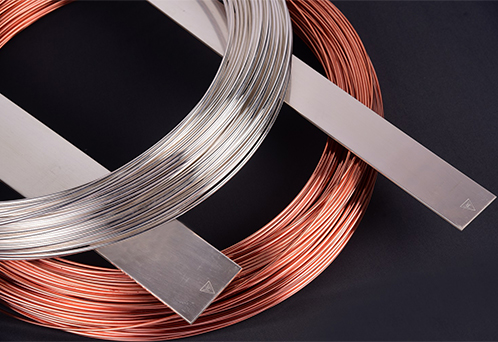
Brazing alloy selection depends upon application, brazing method, metals to be joined, working temperature etc.
Hindustan Platinum produces high quality silver-based brazing alloys. We supply a wide range of filler materials in the form of foils, rods, strips, wires etc. to Industries such as HVACR, Tooling and Electrical.
The amount of Silver in standard brazing alloys varies from 2% to 55%. We manufacture Cadmium free brazing alloys complying to RoHS requirement. Cadmium bearing alloys are also available, if required.
Silver Brazing Alloys are produced according to International Standards ISO 17672, however we also cater to customized specifications and sizes.
Brazing Alloys are available as wires and rods with standard diameter of 1.0mm. We can supply different sizes on request. They can be supplied in continuous form with different packaging such as spool, coil etc.
Brazing Alloys are available as strips with very low thickness. They can be supplied in continuous form with different packaging, such as Spool, Coil etc.
Brazing Alloys are available in different shapes and sizes i.e. disc, square, rings etc. with very low thickness.
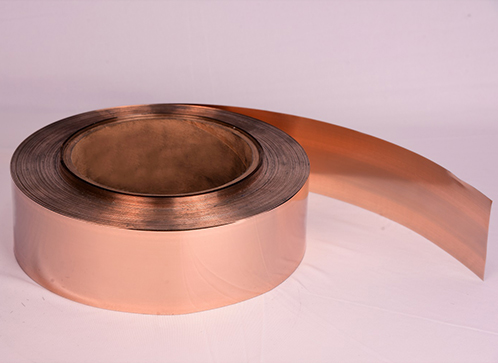
We offer our customers complete assemblies including welded, brazed or riveted assemblies. The carriers are available in various base metals such as copper, brass, phosphor bronze, etc.
We provide assemblies using resistance welding where the contact is individually welded onto a pre-stamped carrier material depending on the volume. We also provide wire welded assemblies where the carrier is formed from a strip using a progressive die.
We braze Silver/Silver Alloyed Contacts on various types of carriers such as Copper/Brass using different brazing process such as resistance brazing, furnace brazing and flame brazing. We check the bonding strength by various methods on the final assemblies.
We provide riveted assemblies to our customers using various processes. For low volume or development products, we provide low cost solution of manual riveting. For larger sizes, we provide both semi and fully automatic riveting options. For very high volumes, we also provide the customer, the option of in – die riveting.
Silver-Graphite contacts are manufactured by powder metallurgy and are normally supplied with vertical graphite particle orientation or with random structure. For some applications, it can also be produced with parallel graphite particle orientation.
Silver-Graphite is normally used in circuit breakers, motor-protective circuit breakers, fault-current circuit breakers and power switches.
Because of the graphite properties, this material is known for having the best anti-welding properties among the contact materials. In addition to that, due to the high silver content, Silver-Graphite contacts have low contact resistance. The disadvantages of this contact material is the low arc erosion resistance, especially during break operations and the low formability.
Our Silver-Graphite contacts are available in the form of contact tips with a brazeable silver side or with brazing alloy layer. The typical properties of this material are listed in the table below:
| Alloy | Graphite Content (%) | Conductivity (% IACS) | Density (g/cm3) |
Hardness HV1 |
|---|---|---|---|---|
| Ag/C 97/3 | 3 | 82 - 90 | 8.9 | 43 |
| AgC 96/4 | 4 | 78 - 84 | 8.7 | 41 |
| AgC 95/5 | 5 | 75 - 81 | 8.5 | 39 |
* This table shows typical material properties. The real contact properties will depend on the shape and production route.
If you have different requirements, HP has a team of materials engineers, specialized in the development of contact materials, that will study your necessities.
Silver-Cadmium Oxide is probably the best and more flexible contact material ever discovered, because of its balanced properties. This contact material is recognized by:
- Good arc-extinguishing properties
- Low arc erosion
- Low and stable contact resistance during the lifetime of the device
- Low temperature rise
- Excellent anti-welding properties
However, due to the Cd toxicity, its use is restricted in some areas like the European Union.
Silver-Cadmium Oxide can be produced by two routes, powder metallurgy (PM) and internal oxidation (IO), which bifurcate into several other different process methods. HP masters most of the process methods and the best choice will depend on the interaction between the contact material and the customer device. One of the most successful products from HP is the extremely ductile Ag/CdO 85/15 wire produced by internal oxidation that is used to manufacture bimetal contacts.
Typical applications of Ag/CdO are switches, relays, wiring devices, contactors, electrical showers.
Our Silver-Cadmium Oxide contacts are normally produced in the shape of wires, strips, rivets and contact tips and the typical properties of this material are listed in the table below:
| Alloy | CdO Content (%) | Process | Conductivity (% IACS) | Density (g/cm³) | Hardness (HV10) | Tensile strength (MPa) |
|---|---|---|---|---|---|---|
| Ag/CdO 90/10 | 10 | IO | 83 | 10.2 | 60-115 | 240-400 |
| Ag/CdO 88/12 | 12 | IO | 78 | 10.1 | 70-115 | 260-460 |
| Ag/CdO 85/15 | 15 | IO | 76 | 10.1 | 80-125 | 265-500 |
| Ag/CdO 83/17 | 17 | IO | 74 | 10.0 | 85-130 | 270-530 |
| Ag/CdO 90/10 | 10 | PM | 86 | 10.2 | 60-110 | 260-440 |
| Ag/CdO 88/12 | 12 | PM | 83 | 10.2 | 65-115 | 260-460 |
| Ag/CdO 85/15 | 15 | PM | 78 | 10.1 | 70-120 | 260-480 |
* This table shows typical material properties. The real contact properties will depend on the shape and production route.
If you have different requirements, HP has a team of materials engineers, specialized in the development of contact materials, that will study your necessities.
Pure Silver (min. 99.9% of Silver) has the highest thermal and electrical conductivities among all metals, is very resistant against oxidation and has excellent formability. However, its low mechanical strength, high erosion rate, high tendency of welding and high tendency of tarnishing in contact with sulphur limits its application.
Typical uses of Pure Silver are push-buttons, relays, appliance and control switches for very low currents.
For improving some properties of the Pure Silver, like mechanical strength and erosion resistance, other elements like Copper and Nickel are added forming Silver Alloys. However, the addition of elements in the pure silver worse the contact resistance, the anti-oxidation properties and the formability of the contact material.
When 0.15% of Nickel is added during the melting process, very fine and dispersed nickel particles are precipitate during the solidification, decreasing the grain size of the Ag grains, producing what is called Fine Grain Silver (Ag/Ni 99.85/0.15). The main advantages of Fine Grain Silver are the improved mechanical properties, if compared with pure silver, without a significant worsening of the best properties of the pure silver, which make Fine Grain Silver a better choice than Pure Silver in most applications.
Since Copper has a much better solubility in Silver than Nickel, adding Copper is a good alternative for increasing the mechanical properties of Pure Silver even more. The addition of Copper also improves the arc erosion resistance and anti-welding properties of the contacts, however the increase of copper content will have negative influence in other characteristics like contact resistance and resistance against oxidation.
Typical uses of Silver Alloys are switches, relays and wire devices up to 20A.
Our Pure Silver and Silver-Alloys contacts are normally produced in the shape of wires, strips, rivets and contact tips and the typical properties of these materials are listed in the table below:
| Alloy | Cu or Ni Content (%) | Conductivity (% IACS) | Density (g/cm3) | Hardness (HV10) | Tensile strength (MPa) |
|---|---|---|---|---|---|
| Ag 99.9 | 0 | 105% | 10.5 | 30 - 90 | 200 -400 |
| Ag/Ni 99.85/0.15 | 0.15 | 100% | 10.5 | 40 - 100 | 220 - 420 |
| Ag/Cu 97/3 | 3 | 90% | 10.4 | 45 - 120 | 250 - 500 |
| Ag/Cu 95/5 | 5 | 88% | 10.4 | 55 - 135 | 270 - 580 |
| Ag/Cu 90/10 | 10 | 86% | 10.3 | 55 - 150 | 275 - 580 |
* This table shows typical material properties. The real contact properties will depend on the shape and production route.
If you have different requirements, HP has a team of materials engineers, specialized in the development of contact materials, that will study your necessities.
Silver-Nickel is a very popular contact material and is used all around the world. As there is no significant solubility between the two elements, this material is produced by the powder metallurgy (PM) route. For Nickel contents up to 30%, the preferable PM route is extrusion of Ag/Ni into wires and strips and for Nickel content above 30%, the preferable PM route is Press-Sinter-Repress (PSR).
Silver-Nickel contacts have good mechanical strength, good welding resistance, low and almost constant contact resistance throughout the life of contact, high arc resistance, good arc moving and extinguishing properties. In addition to that, one of the major reasons of the popularity of this contact material is the fact that it can be directly welded onto copper carriers from wire, without the necessity of adding brazing alloy, bringing significant cost advantages for automation of welding lines. However, this advantage limits the application of Silver-Nickel materials to currents up to 100A, when not paired with other contact materials as Silver-Graphite.
Typical uses of Silver-Nickel contacts are relays, switches, wiring devices, thermostats, contactors circuit breakers, motor protective circuit breakers.
Our Silver-Nickel contacts are normally produced in the shape of wires, strips, rivets and contact tips and the typical properties of these materials are listed in the table below:
| Alloy | Ni Content (%) | Process | Conductivity (% IACS) | Density (g/cm³) | Hardness (HV10) | Tensile strength (MPa) |
|---|---|---|---|---|---|---|
| Ag/Ni 90/10 | 10 | PM | 90 | 10.2 | 40 - 110 | 240 - 430 |
| Ag/Ni 85/15 | 15 | PM | 86 | 10.1 | 60 - 120 | 250 - 430 |
| Ag/Ni 80/20 | 20 | PM | 83 | 10 | 70 - 130 | 280 - 470 |
| Ag/Ni 70/30 | 30 | PM | 71 | 9.8 | 80 - 140 | 330 - 530 |
| Ag/Ni 60/40 | 40 | PSR | 64 | 9.7 | 80 - 150 | 370 - 580 |
* This table shows typical material properties. The real contact properties will depend on the shape and production route.
If you have different requirements, HP has a team of materials engineers, specialized in the development of contact materials, that will study your necessities.
Silver-Tin Oxide is a very popular contact material and is largely used for replacing Silver-Cadmium Oxide. In addition to not be a hazardous material, the main properties of Silver-Tin Oxide contacts are:
- Good arc-extinguishing properties
- Very low arc erosion
- Low and stable contact resistance during the lifetime of the device
- Low material transfer during DC load
- Good temperature rise
- Excellent anti-welding properties
Silver-Tin Oxide can be produced by two routes, powder metallurgy (PM) and internal oxidation (IO), which bifurcate into several other different process methods. In both cases, the use of dopants aids the electrical performance and formability of the materials. HP domains most of the process methods and the best choice will depend on the interaction between the contact material and the customer device.
Typical applications of Ag/SnO2 are switches, relays (including automotive relays), contactors.
Our Silver-Tin Oxide contacts are normally produced in the shape of wires, strips, rivets and contact tips and the typical properties of this material are listed in the table below:
| Alloy | SnO2 Content (%) | Process | Conductivity (% IACS) | Density (g/cm³) | Hardness (HV10) |
|---|---|---|---|---|---|
| Ag/SnO2 90/10 | 10 | IO | 81 | 9.8 | 95 – 115 |
| Ag/SnO2 90/10 | 10 | PM | 83 | 9.8 | 60 – 100 |
| Ag/SnO2 88/12 | 12 | PM | 78 | 9.7 | 65 – 110 |
| Ag/SnO2 86/14 | 14 | PM | 71 | 9.7 | 70 - 115 |
* This table shows typical material properties. The real contact properties will depend on the shape and production route.
If you have different requirements, HP has a team of materials engineers, specialized in the development of contact materials, that will study your necessities.
Silver-Zinc Oxide is another contact material used for replacing Silver-Cadmium Oxide in European Union, typically used in lower current switches, relays and contactors. In addition to not be a hazardous material, the main properties of Zinc Oxide contacts are:
- Very low arc erosion
- Low and stable contact resistance during the lifetime of the device
- Excellent anti-welding properties
Our Silver-Zinc Oxide contacts can be produced in the shape of wires, strips, rivets and contact tips. The typical composition produced by HP is Ag/ZnO 91/9.
If you have different requirements, HP has a team of materials engineers, specialized in the development of contact materials, that will study your necessities.
Silver-Refractory Material family is mainly composed by Silver-Tungsten (Ag/W), Silver-Tungsten Carbide (Ag/WC) and Silver-Molybdenum (Ag/Mo) and is a special category of arcing contact materials for use in high fault current applications, like residential circuit breakers, industrial breakers and high current switchgears.
Ag/W materials are largely used in North America as a result of the high current level fault protection required by UL even for residential homes, while in Europe Ag/WC is the most common material of this family, normally paired with Ag/C.
These materials combine the excellent electrical and thermal conductivity of silver with the high arc resistance, high hardness and high thermal resistance of the refractory metals and its carbides, offering a composite material with the following properties:
- Low contact welding
- Low erosion, under arcing
- Very high resistance against arc erosion, even under high currents
- Poor arc moving properties
- High hardness
- Low, but acceptable contact resistance
The table below shows the difference between these contact materials.
- Highest hardness
- Highest arc resistance
- Increasing contact resistance and temperature rise during lifetime
- Highest welding tendency during short-circuit
- Lowest contact resistance and temperature rise
- Stable contact resistance
- Lower tendency to contact welding
- Lower arc resistance
- Worse anti-welding and anti-corrosion properties than Ag/W
- Stable contact resistance
- Low density of Molybdenum brings cost advantage
- Lower arc resistance
These materials, in the shape of contact tips, can be produced by different PM routes and can be highly customized depending on the application of the customer and typical properties of some alloys are listed in the table below:
| Alloy | W, Mo or WC Content (%) | Conductivity (% IACS) | Hardness (HV10) |
|---|---|---|---|
| Ag/W 50/50 | 50 | 45 | 95-150 |
| Ag/W 40/60 | 60 | 41 | 110-160 |
| Ag/W 35/65 | 65 | 38 | 120-180 |
| Ag/W 30/70 | 70 | 34 | 130-190 |
| Ag/W 25/75 | 75 | 33 | 140-200 |
| Ag/WC 40/60 | 60 | 35 | 120-160 |
| Ag/WC 50/50 | 50 | 37 | 130-170 |
| Ag/WC 60/40 | 40 | 40 | 140-180 |
| Ag/Mo 40/60 | 60 | 32 | 105-165 |
* This table shows typical material properties. The real contact properties will depend on the shape and production route.
For some special applications that require lower temperature rise or lower contact welding, graphite can be added to the Ag/WC, forming Ag/WC/C. The disadvantage is a lower arc resistance.
If you have different requirements, HP has a team of materials engineers, specialized in the development of contact materials, that will study your necessities.
Copper-Tungsten is a contact material used as electrodes or for high power switching in medium and high voltage. The properties of Cu/W materials are similar to the properties of Ag/W. Nonetheless, although the cost of Cu/W is much lower than the cost of Ag/W, it cannot be used as a replacement, because, unlike the silver oxides, the copper oxides are very stable in high temperatures and drastically impact the contact resistance. Therefore, Cu/W are normally used in applications where the contact tip is protected against oxidation.
Copper-Tungsten is supplied by HP in the shape of contact tips and can also be machined into complex shapes. The typical properties are the following:
| Alloy | W Content (%) | Conductivity (% IACS) | Hardness (HRB) |
|---|---|---|---|
| Cu/W 40/60 | 60 | 35 - 45 | 70 - 90 |
| Cu/W 35/65 | 65 | 32 – 40 | 75 – 95 |
| Cu/W 30/70 | 70 | 28 – 38 | 80 – 100 |
| Cu/W 25/75 | 75 | 27 – 36 | 85 – 100 |
| Cu/W 20/80 | 80 | 26 – 34 | 95 – 110 |
* This table shows typical material properties. The real contact properties will depend on the shape and production route.
If you have different requirements, HP has a team of materials engineers, specialized in the development of contact materials, that will study your necessities.
Harder than fine Silver, this contact material has a higher melting point and exhibits a nobler surface. It is largely resistant to sulphur and abrasion and burning. Available in the form of wire, rivets, profiles and contact tips.
| Alloy | Pd (%) | Conductivity (% IACS) | Hardness HV10 | Tensile strength (MPa) |
|---|---|---|---|---|
| Ag/Pd 95/5 | 5 | 40 - 45 | 91 | 248 |
Our various certificates stand testament to our core values and commitment to provide contact materials with the highest quality and reliability with repeatability without compromising the environment and safety of our teams.
